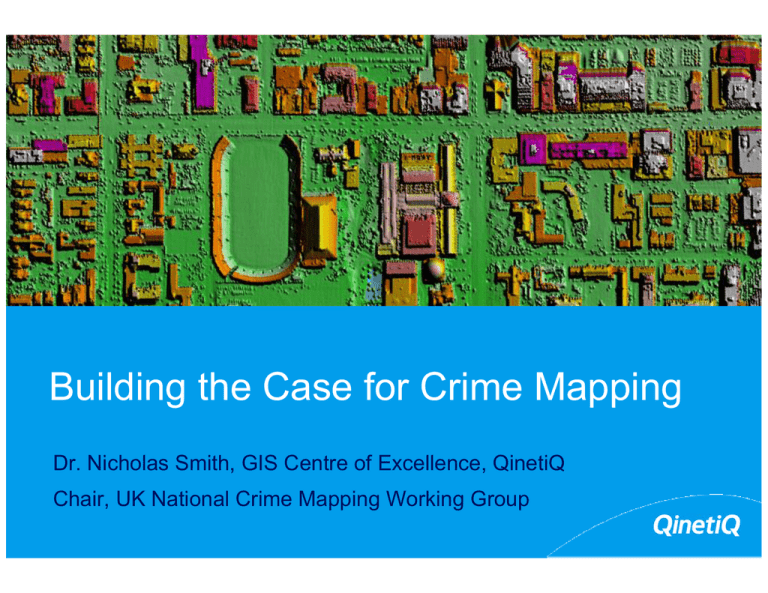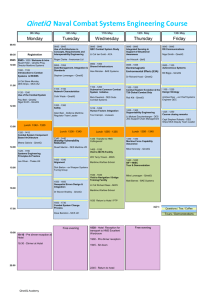Building the Case for Crime Mapping
advertisement

Building the Case for Crime Mapping Dr. Nicholas Smith, GIS Centre of Excellence, QinetiQ Chair, UK National Crime Mapping Working Group A Year Ago… A wide range of excellent independent initiatives Driven to meet specific business needs Often ‘made to happen’ by senior level staff – A need to gain further support within ‘GI-rich’ organisations – A need to spread best practice to ‘GI-poor’ organisations Important Questions • Can we define an agreed picture of Crime Mapping ? • How do we get greater buy-in from senior level decision-makers ? • How can we effectively spread best practice ? Can we pursuade others of the value of Crime Mapping ? Building the Business Case The Pain can be large... – Structural reorganisation – Retraining of staff, requirement for new skills – Changes to working practices (admin and decision making) – New data sharing policies with defined standards …so is the Gain large enough ? – Can we clearly describe the benefits ? – Do they appeal to high level concerns of the organisation ? The Business Case for Crime Mapping often needs to be strengthened through partnership working and data sharing – Access to larger resources with bigger payback Who Shares Data ? Integration within an organisation • Data driven environment • Application rich Integration across organisations • Data shared for a common function • Application driven environment • Very data intensive Internal Integration • Main threats arise from – Tribalism & shifts in power – Resistance to changes in working practices • Introduction of new approaches (e.g. NIM) – Lack of ‘GI aware’ staff - particularly amongst operational staff • Pushing the use of GIS outside normal areas • Building the business case depends on – Securing a ‘sponsor’ within senior management – Promotion to ‘peers’ as well as to senior management (buy-in) – Benefits realised locally so may need to be highly cost-effective – Integrated systems leading to improved workflow – Automation of processes (e.g. area-based target reporting) External Integration • Main threats arise from – ‘Herding cats’ - the need for organisations to retain independence • Policy, operational and procurement decision making – Perceived imbalances of power (different skill levels) – Data protectionism - forced or otherwise… – Lack of data sharing protocols and standards • Building the business case depends on – National level policy decisions / win-win situations – Functions within different organisations being compatible – Establishing cross-organisation communication channels • ‘Champions’ or working groups appointed early in process – Remaining focused on feasible objectives • Will I ever want data from the other end of the country ? One Solution does NOT fit all Internal External • Widespread GI education • Vendor neutral solution • Information / workflow planning • Open data standards • Integrated In-House Systems • Co-ordinated national programme • Strong application development • Centralised data management • Avoid an application-led approach to technology – ‘I want a crime mapping tool’... • The only way to secure buy-in is by offering opt-out – Avoid proprietary solutions, exploit open standards – Mandated systems lead to unhappy users and disparate factions • Don’t implement a solution that doesn’t cause organisational change – Investigate novel solutions - in-house, outsourced, managed services, web-based solutions, distributed systems,... Thank You Dr. Nicholas Smith QinetiQ nssmith@qinetiq.com 01252 39 48 33






